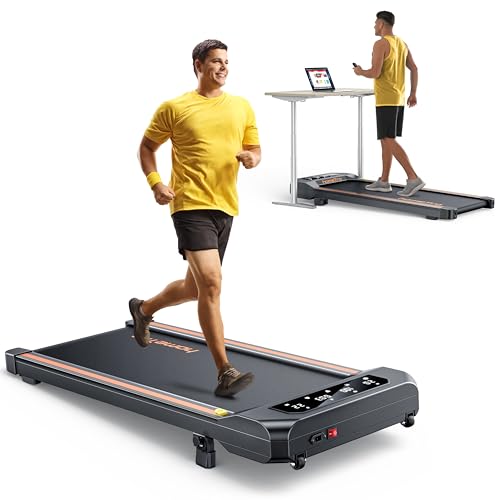You'll Never Be Able To Figure Out This Treadmill Incline Workout's Tr…
페이지 정보

본문
 How to Use a treadmill incline [Www.Northwestu.edu] Workout
How to Use a treadmill incline [Www.Northwestu.edu] WorkoutMany treadmills are able to vary the incline of your exercise. Walking at a higher incline simulates walking uphill and will burn more calories than walking flat.
 This is a low-impact exercise that is a good alternative to running for those who suffer from joint pain. It can be completed in a variety of speed and is easy to modify according to the fitness goals.
This is a low-impact exercise that is a good alternative to running for those who suffer from joint pain. It can be completed in a variety of speed and is easy to modify according to the fitness goals.The right inclined
It doesn't matter if you're a beginner on the under desk treadmill with incline or a seasoned pro, incline-training provides a myriad of opportunities to spice up your cardio exercises. The addition of incline on a treadmill helps simulate the feel of running outdoors without all the pounding on your joints. Increasing the intensity of your runs or walks will help you burn more calories and build endurance, as well as strengthen the muscles in your lower leg, and increase your heart rate to get your blood pumping. You can easily incorporate incline training into your cardio sessions by way of a HIIT workout or a steady-state workout.
Keep your arms pumping when you're walking up an uphill. A good rule of thumb is to tense your arms when you're on an incline of 15 percent, and ease them when you're at a 1-percent incline. This will improve your posture and help prevent injuries when walking up hills. You should also be cautious about leaning too far forward when walking on a steeper incline, as this can cause back pain.
If you're new to treadmill incline exercises, it is recommended to begin at a low slope. It's best to be able to comfortably do 30 minutes of walking at a slow pace on flat ground prior to attempting any kind of incline. This will avoid injury and will allow for gradual growth in fitness.
Most treadmills let you adjust the incline as you work out. However, some don't allow you to change the incline by hand, and you'll need to stop your workout and manually adjust the treadmill's deck to the desired incline. This can be a problem particularly if you're performing an interval training program where the incline changes every few minutes.
It's useful to be aware of your HRmax when you're doing a HIIT exercise. This will let you know when you've reached your target intensity and when it's time to increase the incline or decrease the speed. Similar to when you're performing a steady-state exercise it's crucial to check your heart rate regularly throughout the workout and to keep it within a range of 80 to 90 percent of your maximum heart rate.
Warming up
Treadmill workouts are a great way of burning calories, however adding an incline can increase the intensity and provide additional benefits like functional strength training. Warming up is vital prior to increasing the intensity. This will lower the risk of injury and prepare your muscles for the challenging work ahead.
Warming up with 2 minutes of brisk walk is ideal for those who are new to. After you've warmed-up, you can begin running. After your jog, add two more minutes of brisk walking to continue warming up your legs. You can then move on to a full-body exercise for example, one which incorporates bodyweight workouts such as squats or walking lunges.
A full-body workout is beneficial because it targets multiple muscles. It also helps to build a stronger core. This is a great way to increase your heart rate, without having to push too hard on the treadmill. Ask your fitness instructor for advice when you're unsure of the routine to do.
Including an incline in your Cheap treadmill with incline workout will give you the most realistic terrain for your workout and also boost your VO2 max, or maximum oxygen consumption. Walking on an incline can train your muscles to walk on real-world terrain and can reduce the impact on your knees.
Treadmill incline workouts can also target various leg muscles and are great for strengthening the lower body. Walking at an angle will also increase the range of motion in your arms, and strengthen your shoulders and chest.
A high-intensity treadmill workout is an excellent choice for those who are new to the sport and is suitable for those who wish to push themselves and reach higher heart rates without the pressure of exercising too hard. It is essential to track your heart rate during a high-intensity treadmill workout, and make sure to stretch afterward. A proper stretch can help relieve tight muscles, and will help your body recover from the intense exercise.
Intervals
You can alter the intensity of a treadmill incline exercise using intervals. Interval training has been found to burn more calories while building muscle faster. It involves alternating periods of intense activity with periods of lower intensity exercises, like running or a short walk. This type of workout will help you increase your VO2 max which is the highest amount of oxygen that your body can take in during exercise.
To get the most out of your treadmill incline workout you should try to include an equal amount of jogging and walking. This will allow your body to recover between high-intensity workouts and help prevent injuries. Warm up prior to starting the intervals.
The first step to design a treadmill incline workout is to determine the target heart rate. This should be between 80-90% of the client's maximum heartbeat. Then, you can decide what does treadmill incline mean slope and speed you'll use for each interval.
You can use the built-in interval programs on your treadmill or design your own. For instance begin with a 3 minute interval of jogging at a moderate pace and gradually increase the incline. When you've reached your desired heart rate, you can jog at a comfortable speed throughout the exercise.
For the next set, you can walk at an angle of 10 percent and run for three to six repetitions. Then you can go back to jogging at a slower pace for about a minute. Repeat this process for five to eight intervals.
If you're uncomfortable running on a treadmill, then you could try a running and walking incline workout on uneven ground. This will test your balance and exercise your leg muscles more than the treadmill. It's important to make sure your knees and ankles are free of any problems prior to beginning this type of exercise.
You can also incorporate a variety dumbbell exercises into your incline workout to build muscle. You can, for example, do dumbbell rows and lateral raises during your rest intervals in order to make the exercise more challenging.
Recovery
Most treadmills have an incline function that allows you to simulate running and walking uphill. You can alter the incline of your treadmill to make it more challenging, or add intervals that have greater intensity. This kind of exercise is perfect for those who want to increase their cardio while burning calories without worrying about their joints.
In addition to burning calories, incline walking engages various muscles throughout the body. This can help strengthen the posterior chain which includes the hamstrings, glutes and the muscles of the calf. Incline treadmill walking also works the muscles that make up the calves, such as the smaller tibialis and peroneal anterior muscles. This can improve strength and flexibility, and could be used as an alternative to jogging for those who aren't comfortable with high-impact exercise.
If you're new to incline-walking, begin with a low angle, and increase it gradually over time. This will reduce joint pain and help you achieve your fitness goals quicker. Pay attention to your body. Stop exercising if you notice any discomfort or discomfort.
To get the most benefit of your incline workout it's essential to start warming up for five minutes of easy or moderate walking on an incline. Also, remember to keep track of your heart rate throughout the exercise to ensure that you remain within your target heart rate zone.
After your first incline interval, lower the incline to zero and walk at a fast pace for 3-4 minutes. This phase of recovery helps bring your heart rate back to normal and prepares your body to the next climb.
Repeat this procedure for the remainder of your incline workout. Maintain the ratio of work to rest as close as possible to 1:1. This will help you increase the intensity of your workout and achieve your desired results in a shorter amount of time. Be sure to stretch after exercising to avoid tight muscles and flexibility issues.
- 이전글Some Signs And Symptoms A Child Is Being Abused Or Neglected 24.12.13
- 다음글The Most Hilarious Complaints We've Heard About Private ADHD 24.12.13
댓글목록
등록된 댓글이 없습니다.


